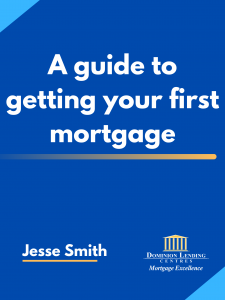
One of the best things about investing in real estate is the number of options investors have for financing a rental property. Investment real estate can be funded via a conventional mortgage or private funding. But in addition to these, homeowners can buy a new home with the equity on their primary residence.
That’s because, as Real Canadian Management Solutions explains, if a substantial part of your mortgage is paid-off, lenders will let you borrow money on your home equity. This is a far easier way for would-be property investors to get started in the rental property business. How does this process work?
What is home equity?
The equity on your home is the difference between the home’s market value and the amount you owe on the mortgage. When you take a home loan, lenders always require that you pay a portion of the purchase price for the property.
If this amount is 20%, the lender will provide the other 80% to complete the home’s purchase. With this arrangement, the lender owns 80% of the house, and you own 20%. That 20% is your equity in the home.
Over time, however, that equity starts to grow as you make the monthly mortgage payments. These payments allow you to slowly transfer ownership from the lender to yourself.
The longer you pay the mortgage, the more equity you earn. Home equity can also grow as a result of value appreciation. When the property’s value increases, the mortgage amount stays the same, but the owner’s equity grows.

When you refinance you have access to a maximum of 80% of the total value of your home. For instance, if you paid $560,000 to buy your home and you owe $290,000 on the mortgage, your usable equity in the property would be $158,000. But if the house has appreciated and its market value is now $610,000, you have even more equity. The combination of mortgage payments and value appreciation will bring your usable equity in the property from $158,000 to $198,000. This amount is what you have available for financing your rental property.
How to leverage your home equity
There are three ways to use home equity to finance a rental property.
Cash-out refinancing
With this option, you first have your primary home revalued, and then you take a new mortgage on the home based on its current value. This new mortgage is used to pay off the outstanding amount on the old mortgage.
Doing this frees up the equity you have built upon the home. You can cash-out on this equity to finance a new property. Although refinancing your home creates a new loan, it also provides cash for further investment.
There are some costs to you as the borrower by doing a refinance, including the new appraisal of your property, lawyer or FCT fees for changing the mortgage on title, and any applicable payout penalty if you are breaking your current mortgage term early. So it is important to know these costs, especially the mortgage payout penalty, before committing to a refinance as they can dictate whether it is worth doing or not.
Home equity loan
The second way to use home equity to finance a rental property is through a home equity loan. This extends a loan to you up to a certain percentage of your home equity. In Canada, this can be as much as 65% of the home’s value, as long as the loan amount and outstanding mortgage do not exceed 80% of the home’s value. Home equity loans come in two variants:
Traditional Home Equity Loan; This is a fixed loan amount paid to you in one lump sum. It adds a second loan to your primary mortgage and is regarded as a second mortgage. This second loan is subordinate to the first loan; in case of default and foreclosure, the first loan will be settled before the second.
Because traditional home equity loans pay out a large sum at once, they work best when you need to make significant one-time payments on a property.
Home Equity Line of Credit (HELOC); A HELOC does not make lump sum payments; it puts a portion of your home equity at your disposal. It is similar to a credit card loan because you can repeatedly borrow and repay all or part of the money.
Furthermore, you only pay interest on the amount you draw. This option is best when investing in things, like, a pre-construction condo. Your interest payment is limited to the money you use.
Why you should leverage home equity for real estate investing
- Firstly, using the equity in your home relives you of the burden of finding new cash for a new mortgage. And because the new property immediately starts to accumulate equity, you can repeat this process repeatedly until you build a sizable property portfolio.
- With a HELOC, you have access to a loan with an indefinite term – most HELOCs in Canada have an indefinite term. And with HELOCs, you only have to pay the interest on the loan every month.



